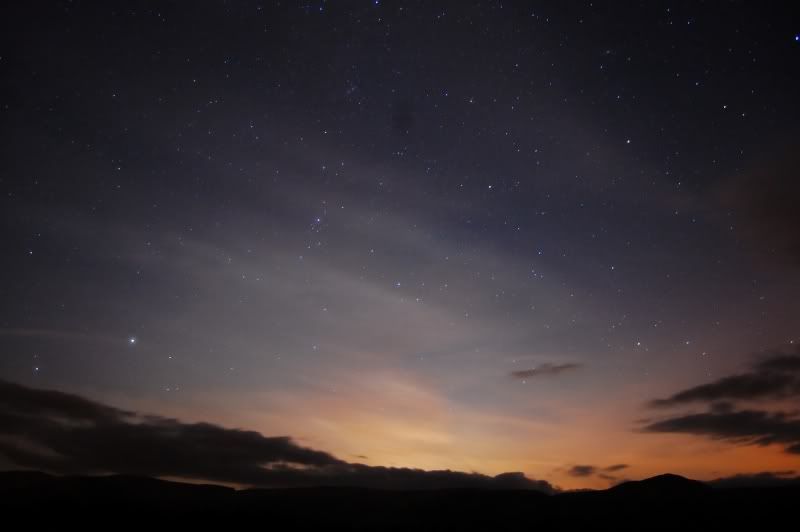Well, when I woke up and saw that it was going to be a clear sky all day, I knew exactly what I'd be up to that evening. It's been a while since I've had the camera out and I had a few ideas about what I wanted to try.
The first 2 are from when I was out and saw the suns colours really begin to show. The second one was a lucky shot, since I wouldn't have stopped and seen it if I hadn't been held up by some sheep being moved.


After the sun had set, and I'd eaten my dinner, I figured it was time to go back out again and see what the night sky held. I felt inspired after seeing the other thread here about astrophotography, and feel pleased with what I have achieved. The last one was stacked in Deep Sky Stacker, just so you know.



All these where taken using a Nikon D40 with the 18-55mm kit lens. Thanks for looking, and don't forget all pictures can be clicked for a hi-res version.
The first 2 are from when I was out and saw the suns colours really begin to show. The second one was a lucky shot, since I wouldn't have stopped and seen it if I hadn't been held up by some sheep being moved.


After the sun had set, and I'd eaten my dinner, I figured it was time to go back out again and see what the night sky held. I felt inspired after seeing the other thread here about astrophotography, and feel pleased with what I have achieved. The last one was stacked in Deep Sky Stacker, just so you know.



All these where taken using a Nikon D40 with the 18-55mm kit lens. Thanks for looking, and don't forget all pictures can be clicked for a hi-res version.


 love them all
love them all
